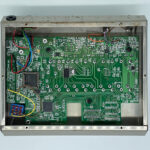Diminished chords. Just the name itself can sound a bit mysterious, right? For guitarists, understanding Dim Chords Guitar unlocks a world of sonic possibilities, adding depth, tension, and a unique flavor to your playing and songwriting. Many guitarists wonder, “When and how should I actually use diminished chords?”. While music thrives on breaking rules, this guide will navigate you through the theory and practical applications of diminished chords, equipping you with the knowledge to use them effectively.
Even if you’re primarily interested in chord diagrams, we encourage you to read through this entire lesson, perhaps over a few sessions. Investing time in understanding the theory behind dim chords guitar will significantly boost your improvisation and songwriting skills, opening up new creative avenues.
Unveiling Diminished Chord Theory
Diminished chords are characterized by their dissonant, unstable sound. This instability is precisely what makes them so captivating. They create tension and a sense of unresolved anticipation, adding intrigue to chord progressions. There are three fundamental types of diminished chords, each with its distinct flavor, as outlined in the table below.
You might see the diminished symbol “°” after a chord letter (e.g., C°). This is the standard notation for “diminished.” When typing, using a lowercase “o” (e.g., Co) is a common substitute for convenience.
| Chord Type | Abbreviations | Intervals | Hear It

